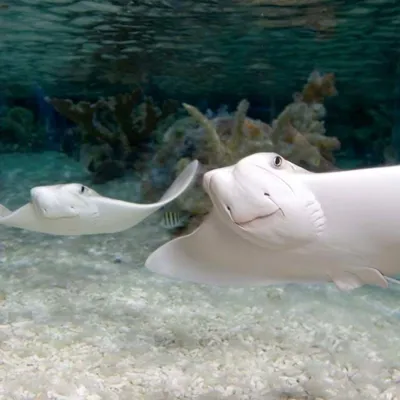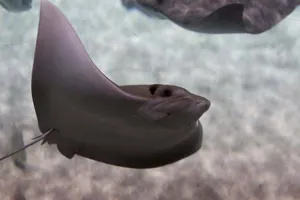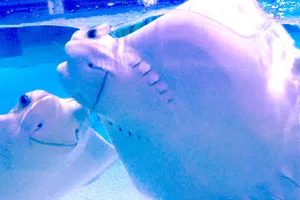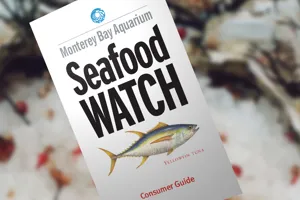
Stingrays— Enter Their Aquatic World
Watch these intriguing animals and learn more about their fascinating lives and adaptations. These pelagic predators are native to the world's oceans' warm and shallow coastal waters. Their relatively long, streamlined bodies allow them to swim at high speeds of approx. 30mph in short spurts or cruise leisurely at 3mph through the water and easily capture prey.
At SEA LIFE Orlando aquarium, we have exhibits featuring these fascinating animals where you can learn all about their evolution, anatomy, and other exciting facts. For a wholesome stingray experience, visit SEA LIFE Orlando with your family and get to debunk any myths about stingray encounters.

Qualities and Behavior
Take a look at these creatures and observe their interesting behaviors, and qualities that make them as unusual as they are attractive. Stingrays boast some unique attributes, these include:
- Stingrays have elongated bodies, pectoral fins, and tails that give them the flat-floating appearance.
- As their name suggests, stingrays have bony stings located by their tail that can deliver a painful sting when catching prey.
- Their mouth is lined with numerous tiny teeth that have a unique pattern.
- These animals can detect prey underwater by pulsing bio-electric fields called electroreception.
As part of your stingray experience at SEA LIFE Orlando, you’ll get to learn that the majority of stingrays are harmless to humans. .
Types of Stingrays
Stingrays are related to sharks, having evolved from them approximately 150 million years ago. All types of stingrays are classified into 10 families and there are multiple species of these stingrays and skates. Their unique shape stems from their broad pectoral fins that run across the length of their bodies. Some species of stingrays swim in a wavy motion while others flap their wings gracefully in a bird-like motion. Let’s discuss the most common types of stingrays:
Also referred to as short-tailed stingrays, can grow up to 14 ft wide and weigh up to 700 pounds. Smooth stingrays have two stingers; a small one at the front and a large one at the back.
Characterized by a short tail, no dorsal fins, and come in various colors and patterns. Yellow stingrays are venomous and present a danger to humans since they live in shallow sandy waters where they easily camouflage.
These freshwater stingrays commonly found in tropical and temperate marine waters. They have whip-shaped tails with poisonous barbed tips.
Feature a diamond-shaped body where the top side is brownish in color whereas the underbelly is white. This attribute helps them camouflage in the sand, only leaving the eyes plus tail visible.
Characterized by triangular-shaped pectoral fins and have exceptionally long tails. Their name is derived from their gliding movement, which is similar to an eagle, and a tendency to leap out of the water as they swim in the open ocean. They inhabit shallow sandy coastlines.
The largest species and can reach up to 25ft wide and weigh up to 5,000 pounds. They have triangular-shaped fins and feed on plankton plus fish larvae with their forward-facing mouths. Manta rays are non-violent and curious and tend to swim with divers. Manta rays keep gliding to pass water since their gills are vestigial organs.
Small and have a yellow-brown color that enables them to camouflage in the sand on beaches and feed on invertebrates.
Covered by colorful neon blue spots on their bodies, with two blue strips running down their tail. They have protruding eyes and inhabit warm tropical waters where they feed on mollusks, shrimp, and crabs.
Generate an electric discharge ranging between 8-220 volts from their stingers, akin to electric eels as a defense mechanism or to stun their prey.
They have short thread-like tails with shark-like teeth and feed on mollusks, small fish, and crustaceans.
Cownose rays have a head that resembles a cow’s nose and are active swimmers living primarily in estuaries and shallow bays in the coastal areas.
Also called the whitetail stingray coachwhip ray, Macleay's coachwhip ray, or whitetail whiprays. They live in the rubble and sand bottoms of lagoons, coastal and deep outer reefs and feed on crustaceans, and small fish.

Importance of Stingrays
Stingrays are an essential part of the marine and coastal ecosystem. They play the role of habitat engineers as they hover and excavate sand in search of food. Such actions create micro-habitats for other small invertebrates.
Moreover, stingrays play a crucial role in regulating climate change and the ecological functioning of the oceans by consuming photosynthetic plankton. Thus, this enables the transfer of carbon from the atmosphere to the deep ocean.

Did You Know? Interesting Facts About the Stingray
Stingrays do not have a bony skeleton since their body is made up of cartilage to bolster flexibility. Some cultures in the world revere the stingrays as a symbol and totem of spiritualism- if you have watched "Moana," you probably have an idea of this custom.
Here are several other interesting facts you should know about stingrays:
- Stingray venom was used by Greek scientists for medicinal purposes (as local anesthesia).
- Stingrays are masters in the art of camouflage
- Stingrays venom is potent even after death
- Stingrays have very long mating periods of up to seven months and give birth each year, although most female stingrays species don't protect or provide for their babies

Stingray Conservation
Stingray populations are currently declining at alarming rates due to threats such as overfishing owing to their high protein meat and their durable leather. Other risk factors include boat strikes and entanglement in fishing gear. Since they reproduce and grow slowly, their numbers have progressively declined. Today, some species feature on the IUCN Red List of threatened species.
As stingrays play a vital role in the coastal and marine ecosystems, it is essential to ensure that their populations are conserved to see to their survival. Several non-profit organizations, government agencies, and dedicated biologists are at the forefront of educating communities and mitigating the decline of stingray populations. Scientists have studied and researched stingrays' behavior, reproduction, and genetics to further boost conservation efforts.
Here are some steps you should take to play a role in ensuring stingray conservation:
- Be a conscious seafood consumer and choose seafood that is fished and farmed using sustainable methods
- Practice the stingray shuffle when you are wading in shallow waters at the beach to warn and avert stingray encounters that could have detrimental impact
- Dispose of unwanted fishing equipment appropriately
- Participate in awareness-raising initiatives about stingray conservation
Visit SEA LIFE Orlando Aquarium for a wholesome stingray experience and learn more about the ways you can support the conservation of these magnificent creatures.

Stingray and Human Interaction
Stingrays may lash out with their barbs when spooked and feel threatened. Since some are poisonous, you should always take caution and shuffle your feet when in shallow waters to warn them. However, some forms of stingray-human interaction, such as constant feeding, have adversely impacted their behavior and ecology.
Manta rays are known to be curious and have been observed to swim side by side with divers at many tourist destinations. At SEA LIFE Orlando aquarium, you will get to enjoy spectacular views of these sea creatures.
Frequently Asked Questions
Dietary preferences of stingrays vary according to species, but generally, stingrays feed on small fish, mollusks, planktons, fish larvae, and crustaceans such as crabs, shrimps, and crayfish.
No, although stingrays give birth to live young pups, they are cartilaginous fish.
Yes, stingrays are flat-bodied sharks and belong to a group of fish called "batoids," which evolved from sharks around 150 million years ago.